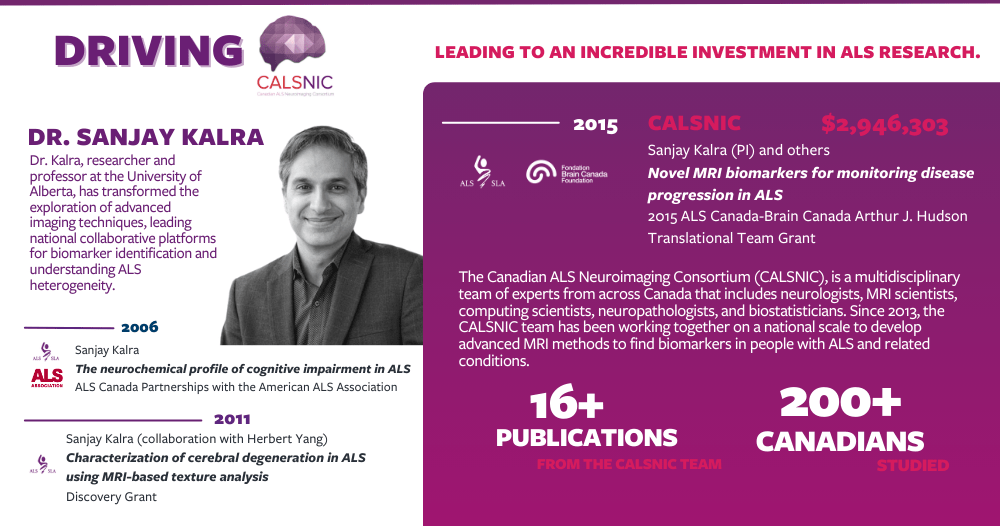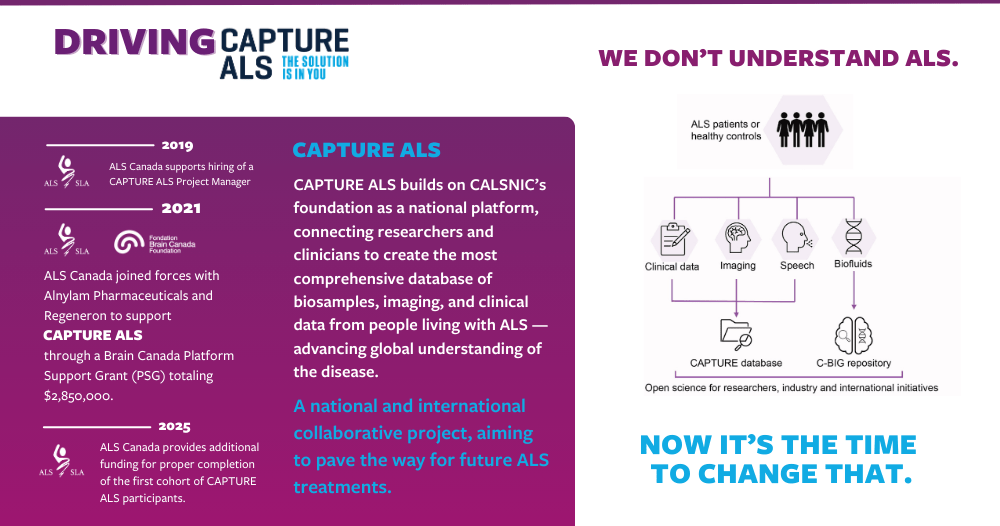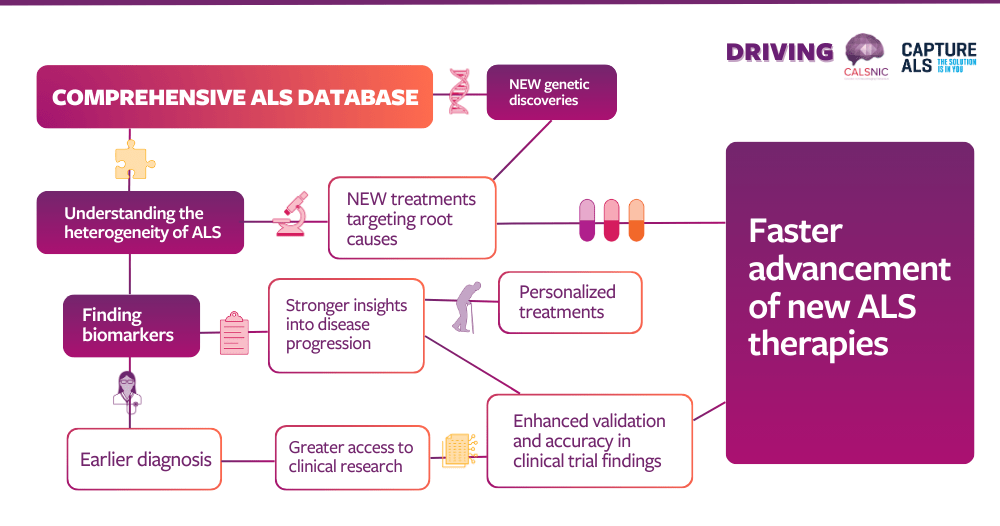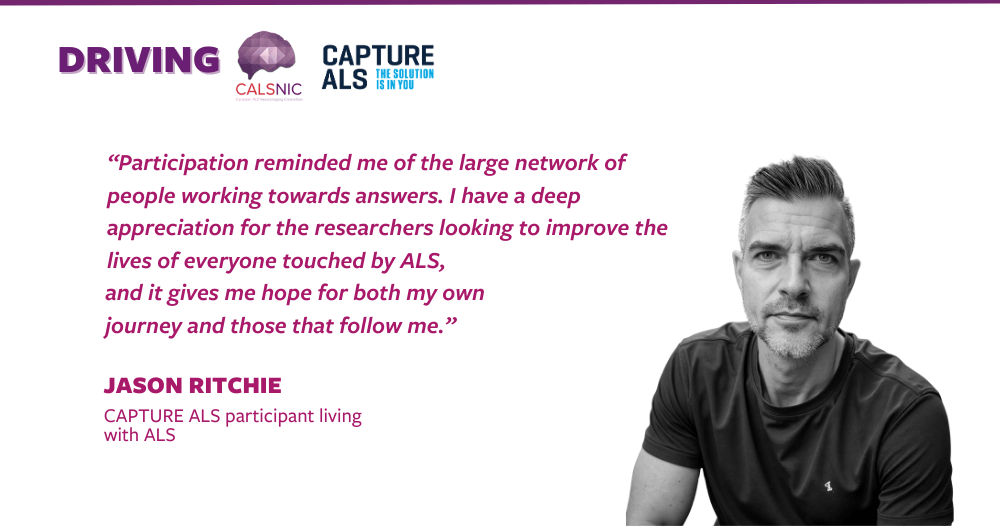Ten years ago, Canada was falling behind in studying people living with ALS.
The biggest, most impactful way to study the complexity and variability of ALS is through observational studies that collect information and samples from people living with ALS. The disease is known for its heterogeneity, meaning it varies significantly from person to person in terms of symptoms, progression, and possibly underlying biology. This makes it challenging to pinpoint the exact causes of ALS and find effective treatments. However, through observational studies, researchers come closer to understanding the diverse genetic, environmental, and molecular factors that may contribute to ALS, and gain insights into finding novel treatments.
In 2014 in the United States, observational studies like Answer ALS and ALS TDI’s Precision Medicine Program (PMP), now known as ALS Research Collaborative (ARC), were recruiting participants and expanding, with the potential to provide critical insights to research. Despite ALS Canada’s outreach efforts to engage Canadian clinical sites, it was not possible to secure participation for these studies in Canada.
Thus, there was a pressing need to bring together the Canadian research and clinical community to create opportunities for people living with ALS to participate in observational research close to home. Yet, compared to the U.S., Canada faced significant limitations in ALS research funding and capacity, restricting the scale and reach of these efforts.
But Canada had already begun laying the foundation for something big. For more than 30 years, the ALS Canada Research Program has been supporting Canadian researchers through foundational grants, investing in early-stage ideas and building momentum for larger initiatives. These initial investments often laid the groundwork for follow-up funding, enabling promising projects to scale and evolve into impactful, long-term research efforts. Among researchers supported was Dr. Sanjay Kalra, from the University of Alberta, a globally respected imaging expert. His early work supported focused on exploring neuroimaging as a potential biomarker for ALS and uncovering the insights that advanced imaging could offer into the disease. (You can read more about the topic in our Inside the Science edition.)
Then, in 2014, the ALS community was extremely fortunate to receive donations from the Ice Bucket Challenge. These funds allowed ALS Canada, in partnership with Brain Canada, to support the Canadian ALS Neuroimaging Consortium (CALNISC), a multidisciplinary team of experts across multiple academic centres, led by Dr. Kalra. The funding was essential for the network to initiate a Canadian observational study (CALSNIC-1), collecting demographic, clinical, neuropsychological, and imaging data from people living with ALS, with the goal to discover MRI-based biomarkers that could speed up diagnosis, improve our understanding of disease biology, and enhance clinical trial insights.
As of 2025, CALSNIC includes two major studies with a combined enrollment of over 200 participants living with ALS and 150 healthy controls. It remains one of the few multi-site, longitudinal neuroimaging initiatives in ALS research worldwide. The project has generated multiple publications, offering valuable insights to the global effort to understand and treat the disease.




